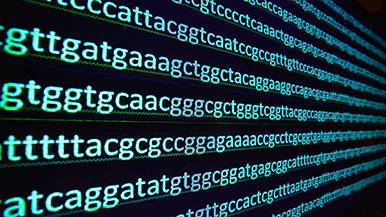Seminario - Biotecnologie e Bioscienze - Giovedì, 14 marzo 2024, 16:30, edificio U4-TELLUS, aula U4-01 / Webex
Piero Carninci, Human Technopole, Milano
Abstract

We have been mapping genome elements, broadly identifying promoters, enhancers, protein-coding, and lncRNAs in the FANTOM projects in a variety of cells. These regulatory elements mapping efforts are currently continued on the Human Cell Atlas in Japan, where we profile transcriptomes while focusing on the simultaneous identification of promoters and enhancers.
On the other hand, lncRNAs constitute a large group of transcripts, for the majority of which the function is still unknown. Genetic evidence and conservation suggest a possible function for some 19K, however a more direct assessment of lncRNA function is needed. We started the FANTOM6 Project to directly test the function of lncRNA by systematically knocking down several hundreds of lncRNAs in human primary fibroblasts and ES cells, suggesting a function for >30% of lncRNA tested in each cell type. In the second stage of the project, using our RADICL-seq technology, we broadly map RNAs bound to chromatin, because of the important known role of several lncRNAs in regulating the epigenome/chromatin activity. Our new data identifies a large number of interactions showing various patterns: these include interactome driven by enhancer RNAs, intronic RNAs, lncRNAs, and RNAs from retrotransposon elements. RNA interactions display dynamic interaction patterns during differentiation/cell activation, and specific interactomes for each class of RNAs, suggesting a yet-described regulatory and structural role of RNAs.
For a specific class of lncRNAs, we have accumulated a much broader knowledge of function and mechanisms: this is the case of SINEUPs, antisense lncRNA that enhance protein translation of the mRNA that they overlap. Enhancement of protein translation is mediated by SINE elements and the specificity of action is mediated by the region antisense to the 5’UTRs of the target mRNAs. SINEUPs can be designed to target specifically any mRNAs and may be used for future therapies for diseases including haploinsufficiencies. We are deciphering the structure/functional relationship behind the mechanism of action SINEUPs.
Host: Silvia Nicolis
LINK per partecipare al seminario: https://unimib.webex.com/unimib-it/j.php?MTID=m1530c53ef31b7b2b0994ae3bf123003b
password: day14 (32914 da telefoni e sistemi video)
Il seminario è APERTO a tutti.
tag: #BtBsSeminars #NicolisLab_BtBs